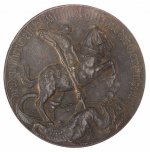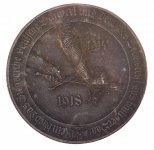niffler
Hero Member
- Mar 19, 2008
- 907
- 1,367
- 🥇 Banner finds
- 1
- Detector(s) used
- Equinox 900, DFX, Tesoro Tiger Shark, Killer B Hornets, Stealth 720i scoop
- Primary Interest:
- All Treasure Hunting
I'm guessing St. George and the Dragon, but beyond that....?


